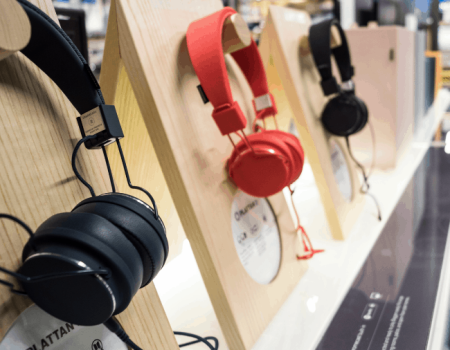The Home and Interior Industry
DOES OMNICHANNEL LEAD TO GOOD FINANCIAL PERFORMANCE?
This year, Danske Bank has provided a financial analysis of the Omnichannel Index’s industries to get a deeper understanding of each industry’s terms.
Presented in collaboration with
Solid financial performance
Danske Bank has conducted an extensive analysis of the companies’ performance in Denmark, Sweden, and Norway based on public records.
Here, they have accounted for the revenue from 2016 to 2018 and the associated growth rate.
The Home and Interior industry is one of those industries with an average omnichannel effort, stable revenue growth, but EBIT-margins under pressure.
We see a financial opportunity in optimising the store network and investing in new store concepts since many customers prefer to buy the industry’s product in-store.
Prepared for the future
Examining details and comparing financial data with each company’s omnichannel score shows great potential. Most of the companies have seen the light in omnichannel, but still struggle with succeeding financially. This means that they are prepared for the future but still need financial power to become future-proof.
Average score of Home and Interior industry
Average score of the best performing industry
This also applies to the ones with strong revenue growth and EBIT-margin. Conversely, some of the companies with the lowest omnichannel score are the companies with low revenue and margin.
According to Danish E-commerce Association (FDIH), 59% of customers prefer to see and touch products before they purchase them. This is something the industry should take advantage of.
The results across nations
DK: 70
SE: 59
NO: 56
DK: 56
SE: 50
NO: 50
DK: 57
SE: 42
NO: 39
DK: 32
SE: 25
NO: 36
DK: 48
SE: 26
NO: 36
How to beat digital competitors
In the UK, France, and Italy ‘home & kitchen’, is among Amazon’s three best-selling industries, which underlines the online potential in the industry.
For now, the industry does not fight with giant pure players and has every possibility to attract customers with omnichannel features. But what if Zalando starts to sell home and interior products and the EBIT-margin begins to fall further?
The industry must become more of a source of inspiration – whether it is online or on social media platforms e.g. Instagram.
Since today’s customers are browsing more and more and the industry has social media-friendly products, the industry must save the shopping cart across channels. This supports a seamless buying experience and effectively uses omnichannel features to turn inspiration-browsing into sales.
Anti-loyal customers
The industry is characterised by some significant differences between the industry’s omnichannel level in each country. In Denmark, home and interior is one of the best-performing industries, whereas it in Norway and Sweden performs below average.
In general, the industry is struggling with customers who, sometimes, are more loyal to the brand being sold than to the retailer itself.
To meet the customers’ cost consciousness, loyalty clubs and smarter use of customer data is a must have for the industry. This will give them the opportunity to tailor offers to each customer based on buying habits.
Only half of retailers and brands in the industry offer loyalty programmes and membership clubs showcasing purchasing history. This is surprisingly low considering the promotional benefits.





